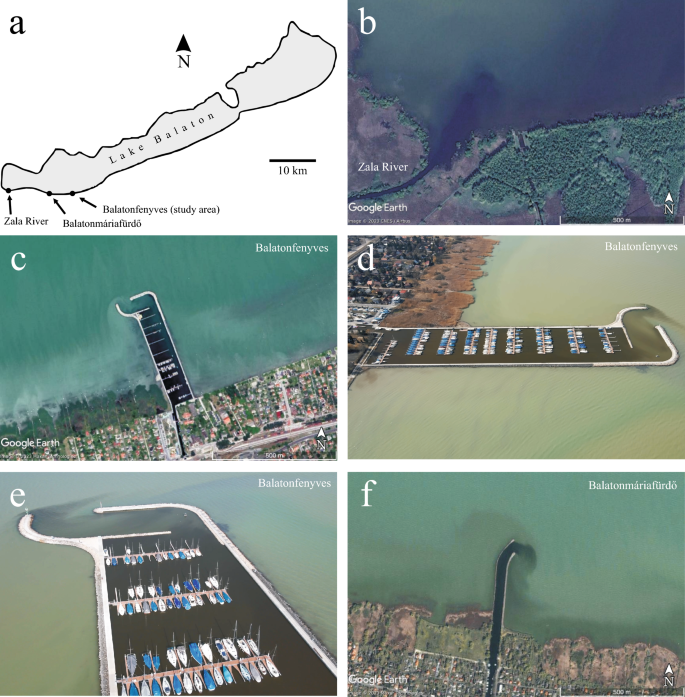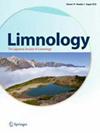偏振光污染的生态优势:运河入海口暗湖斑块对非蠓生境的积极影响
IF 1.6
4区 环境科学与生态学
Q3 LIMNOLOGY
引用次数: 0
摘要
反射高度偏振光和水平偏振光的深色人工表面通常会对极趋水昆虫利用水反射光的水平偏振光探测其栖息地产生不利影响。这种对生态不利的现象被称为偏振光污染。我们观察到,从秋天到春天,匈牙利巴拉顿湖一个港口的混凝土墙之间的水不断变暗,这是由于一条富含溶解腐殖质物质的运河的流入。利用地面成像偏振法,我们证明了这片深色水域反射的光比明亮的湖水具有更高的偏振度。我们的假设是,从黑暗水域反射的较强的水平偏振光比周围较亮的湖水更吸引成群、寻水和产卵的非叮蚊(摇蚊科)。幼虫取样结果表明,港内摇铃鱼的幼虫密度和平均大小均明显大于周边湖泊。这一发现可能代表了偏振光污染的生态优势:偏振光鱼被强烈的水平偏振光吸引,在运河流入的季节性黑暗水域,幼虫的丰度增加。应考虑到,幼虫丰度的增加可能导致群集强度的增加,从而对人类造成相当大的滋扰。本文章由计算机程序翻译,如有差异,请以英文原文为准。

Ecological advantage of polarized light pollution: positive effect of a dark lake patch at a canal inflow on habitat of non-biting midges
Abstract Dark artificial surfaces reflecting highly and horizontally polarized light usually have negative effects on polarotactic aquatic insects detecting their habitats by the horizontal polarization of water-reflected light. This ecologically disadvantageous phenomenon is called polarized light pollution. We have observed that the water between the concrete walls of a harbour of the Hungarian Lake Balaton is continuously dark from autumn to spring due to the inflow of a canal rich in dissolved humic substances. Using ground-born imaging polarimetry, we demonstrated that this dark water patch reflects light with higher degrees of polarization than the brighter lake water. Our hypothesis was that the stronger horizontally polarized light reflected from the dark water patch is more attractive to swarming, water-seeking and egg-laying non-biting midges (Chironomidae) than the surrounding brighter lake water. With larval samplings, we showed that both the density and the average size of chironomid larvae were significantly larger in the harbour than in the surrounding lake. This finding may represent an ecological advantage of polarized light pollution: polarotactic chironomids are intensely attracted to a strongly and horizontally polarizing, seasonally dark water patch at the canal inflow, where the abundance of larvae increases. It should be taken into consideration that increased larval abundance might result in increased swarming intensity which could affect humans by causing considerable nuisance.
求助全文
通过发布文献求助,成功后即可免费获取论文全文。
去求助
来源期刊

Limnology
地学-湖沼学
CiteScore
4.30
自引率
6.20%
发文量
15
审稿时长
>12 weeks
期刊介绍:
Limnology is a scientific journal published three times a year, in January, April, and August, by Springer in association with the Japanese Society of Limnology. The editors welcome original scientific contributions on physical, chemical, biological, or related research, including environmental issues, on any aspect of basic, theoretical, or applied limnology that present significant findings for the community of scholars. The journal publishes Rapid communications, Research papers, Review articles, Asia/Oceania reports, and Comments.
The aims and scope of Limnology are to publish scientific and/or technical papers in limnological sciences, to serve as a platform for information dissemination among scientists and practitioners, to enhance international links, and to contribute to the development of limnology.
 求助内容:
求助内容: 应助结果提醒方式:
应助结果提醒方式:


